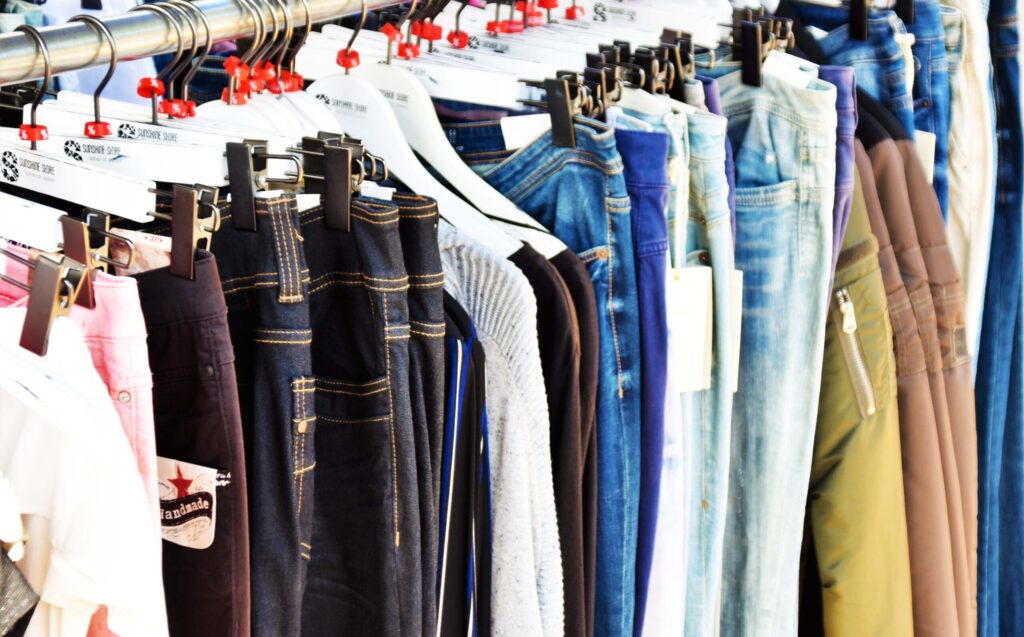 Turning Trash to Treasure, One Outfit at a Time – Learn How to Ditch the Landfill and Embrace Fashion Recycling
Turning Trash to Treasure, One Outfit at a Time – Learn How to Ditch the Landfill and Embrace Fashion Recycling
In a world where sustainable practices are increasingly prioritized, finding alternatives to landfill disposal for our unwanted clothes has become more critical than ever.
Fortunately, numerous options across the United States exist for donating or selling clothing items to places like Poshmark or ThredUp, that still have life left in them–from well-known organizations like Goodwill and The Salvation Army to online platforms and local thrift stores, many avenues exist for giving your clothes a second chance.
By redirecting your clothing away from the landfill, you can contribute to reducing waste and positively impacting both the environment and the lives of those in need.
Here are some popular options:
- Goodwill: Goodwill is a well-known nonprofit organization that accepts clothing donations. They have thrift stores nationwide where you can drop off gently used clothing items.
- The Salvation Army: Similar to Goodwill, The Salvation Army operates thrift stores and donation centers where you can donate clothes. They use the proceeds from sales to fund their charitable programs.
- Local thrift stores: Many communities have thrift stores or secondhand shops accepting clothing donations. These can be independent stores or part of a larger chain.

- Consignment shops: Consignment shops allow you to sell your clothes and typically pay you a percentage of the selling price once your items are sold. Some well-known consignment chains include Plato’s Closet and Buffalo Exchange.
- Online platforms: There are several online platforms where you can sell your clothes, such as Poshmark, ThredUP, and Depop. These platforms provide a marketplace for individuals to buy and sell secondhand clothing.
- Homeless shelters and community organizations: Consider contacting local homeless shelters, community centers, or other charitable organizations. They may accept clothing donations to distribute to those in need.
- Dress for Success: Dress for Success is a nonprofit organization providing professional attire to needy women. They accept professional clothing donations, including suits, dresses, and accessories.

- Schools and universities: Some schools and universities have clothing drives or donation programs to support students in need. Check with local educational institutions to see if they accept clothing donations.
- Freecycle or local online communities: Online platforms like Freecycle or local community groups on social media may have members interested in receiving your donated clothes.
TIP: Remember to check with each organization or platform regarding their specific donation guidelines and any restrictions on the condition or types of clothing they accept.
Did you know?
The decomposition of clothing in landfills can release methane gas. Methane is a potent greenhouse gas that contributes to climate change. When natural fibers, such as cotton or wool, decompose in anaerobic (oxygen-deprived) conditions found in landfills, they produce methane as a byproduct.
 Methane has a significantly higher global warming potential than carbon dioxide, making it a concerning environmental impact of clothing waste.
Methane has a significantly higher global warming potential than carbon dioxide, making it a concerning environmental impact of clothing waste.
It emphasizes the importance of reducing, reusing, and recycling clothing to minimize the environmental footprint of our fashion choices.
A little history:
The issue of clothing waste and its impact on landfills is a relatively recent concern, closely tied to the rise of fast fashion in the late 20th century.
Fast fashion refers to rapidly producing and consuming inexpensive clothing items that quickly go out of style. This business model, popularized by brands like Zara, H&M, and Forever 21, significantly increased clothing production and subsequent disposal.
Before the advent of mass production and globalization, clothing was often made to be durable and long-lasting. Garments were frequently repaired, altered, or passed down through generations.
 However, with the rise of fast fashion and its emphasis on low prices and quick turnover, clothing has increasingly become viewed as disposable.
However, with the rise of fast fashion and its emphasis on low prices and quick turnover, clothing has increasingly become viewed as disposable.
As the demand for new styles skyrocketed, the industry responded by accelerating production and employing cheap labor in countries with lax environmental and labor regulations. This approach led to the overproduction of garments, resulting in vast quantities of clothing ending up in landfills.
The environmental impact of clothing waste became more apparent as concerns about landfill space and sustainability grew. The decomposition of natural fibers in landfills, coupled with synthetic fabrics that take hundreds of years to break down, raised alarms about the release of methane gas and the pollution of soil and water systems.
Organizations, charities, and individuals have actively promoted clothing recycling, secondhand shopping, and sustainable practices in response to these concerns.
The fashion industry has started addressing the issue through initiatives like clothing take-back programs, upcycling, and using recycled materials.


